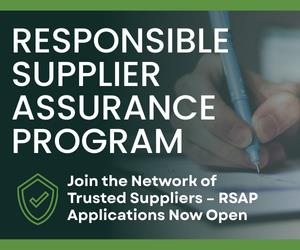Chemical exposure is a constant threat to linen, uniform and facility services employees. If not properly trained on the handling, use and clean-up of chemicals, this lack of preparedness could lead to serious injuries, involving absorption, ingestion, or inhalation that could have lifelong effects. Proper training and awareness can help staff reduce their vulnerability to dangerous chemicals that laundry employees are exposed to daily.
Two examples of chemical-related injuries show the importance of Hazardous Communication Training:
- A maintenance engineer was replacing a chemical drum and in the process of switching hoses from one drum to the other, chemical splashed into his eye, resulting in serious injury.
- An employee was cleaning carts with chemicals when his socks and shoes became soaked, resulting in chemical burns to the feet and ankles. Neither of these employees had received training on dealing with chemicals. If they had, they would have had the proper Personal Protective Equipment (PPE) and knowledge on chemical handling.
Hazardous Communication is essential to ensure safety in the linen, uniform and facility services industry. The Occupational Safety and Health Administration (OSHA) has its “Right to Know” program, also known as the Hazard Communication Standard (HCS). This regulation is designed to protect employees from hazardous chemicals used or stored in their workplaces. It grants employees a “right to know” and to understand the chemicals they are exposed to and how to work with them safely. The standard requires that staff must have Safety Data Sheets readily available on site and kept current with accurate data. The Hazard Communication Standard (HCS) aligns with the international Global Harmonized System (GHS).
The GHS is an internationally recognized standard that provides a consistent approach to classifying, labeling and communicating information about chemical hazards. The GHS standards ensure that employees understand how to handle, store and use hazardous chemicals. When laundry facilities implement GHS standards, they help protect employees from the risks associated with these chemicals, thereby lowering accident risks and complying with regulatory mandates.
New employees must receive Hazardous Communication Training during onboarding. No employee should begin work before completing the training and passing a quiz to confirm their knowledge. Failing to train employees exposes them to hazards, plus OSHA fines for noncompliance. Failing to show proof of Hazardous Communication Training for employees is one of the top three OSHA citations in the laundry industry. The others are Bloodborne Pathogen Training and Lockout/Tagout of machinery.
Once an employee has completed Hazardous Communication Training, it’s important that facilities maintain chemical awareness during team huddles. Topics could include reminding employees of where the Safety Data Sheet Binder is located and reviewing an SDS of a particular chemical. Another topic could center on reviewing chemical-container labeling and educating employees on various chemicals in the plant. Other areas include:
- Ensuring that chemicals are used appropriately.
- Storing chemicals in approved areas.
- Disposing of used chemicals and containers properly.
- Knowing how to clean up and report a chemical spill.
- Familiarity with the Chemical Pictogram.
Ensuring that employees are properly trained on and complete frequent reviews of Hazardous Communication topics will help reduce the risk of chemical exposure and provide a safe work environment for employees. TS
Brian Varner is TRSA’s safety consultant, instructor, and auditor. Contact him at bvarner@trsa.org.
Categories
Magazine Article Type
Department, Safety Focus




